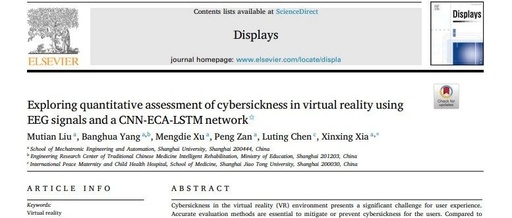Recently, the research team proposed a method for assessing the severity of VR cybersickness using electroencephalogram (EEG) signals, published in “Displays”. This study, titled “Exploring quantitative assessment of cybersickness in virtual reality using EEG signals and a CNN-ECA-LSTM network”, induces various degrees of cybersickness through visual stimulation paradigms and collects corresponding EEG data. It extracts the spatiotemporal features of EEG signals through spatiotemporal convolution, fully utilizes the temporal context and dynamic characteristics of cybersickness, and employs LSTM to capture the temporal dependencies of EEG signals, ultimately proposing the CNN-ECA-LSTM network (CELNet) to decode EEG data and obtain a cybersickness score.
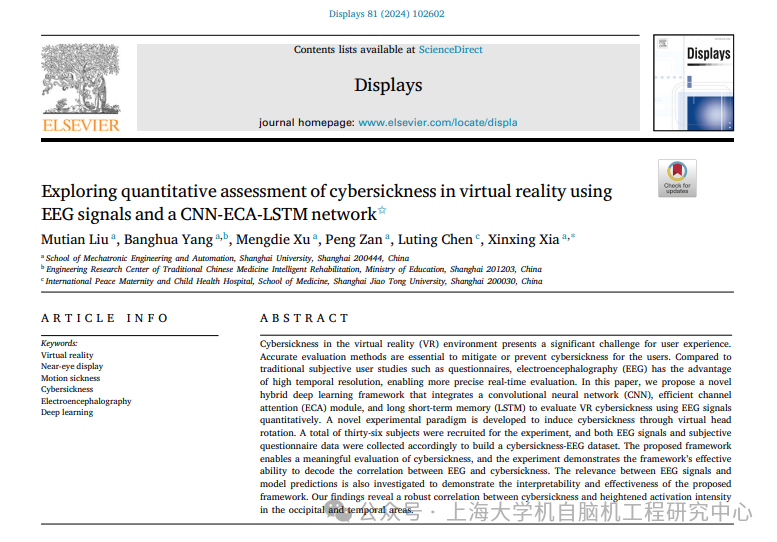
Background Significance:
Virtual reality (VR) technology can provide users with multi-information, three-dimensional dynamic, interactive simulation experiences, and has been widely applied in various fields such as entertainment, healthcare, and education. However, for certain populations, VR content can easily induce cybersickness, causing users to experience discomforting physical symptoms such as nausea and dizziness, which can be said to be one of the main obstacles limiting the widespread application of VR technology. To alleviate the severity of cybersickness, accurate and real-time assessment of cybersickness is a prerequisite. Traditional assessments of cybersickness mainly rely on subjective questionnaire information from user surveys. While questionnaires can provide a more detailed assessment of cybersickness, they cannot be applied in continuous and real-time VR usage scenarios, which limits the use of questionnaire-based assessment methods in practical VR applications. Therefore, there is an urgent need to achieve objective, detailed, and real-time assessments of cybersickness from a new perspective.
Visual Stimulation Paradigm:
The proposed visual stimulation paradigm is shown in Figure 1. VR cybersickness is induced through different angular velocities in the first-person perspective, including yaw, roll, and pitch, while collecting EEG signals and questionnaire information from participants. Each experiment lasts for 1 minute, and each participant undergoes a total of 12 experiments.
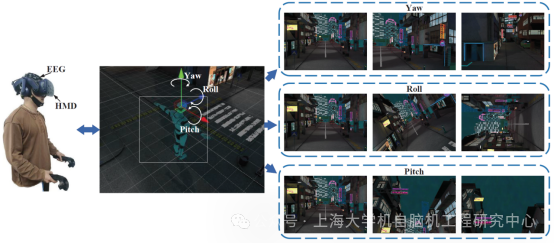
Figure 1. Experimental Paradigm and Scene
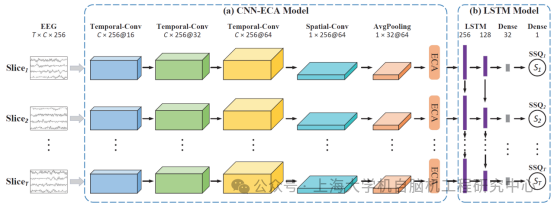
Figure 2. CELNet Network Model
Main Results:
This work achieves a detailed quantitative assessment of VR cybersickness based on EEG signals, with the correlation analysis results between CELNet and EEG signals shown in Figure 3. To reduce the computational load and parameter complexity of the model, and to potentially embed the EEG module into HMDs in the future, researchers selected specific EEG channels strongly correlated with VR cybersickness based on the correlation analysis results, achieving a lightweight assessment of cybersickness. The evaluation performance of CELNet for VR cybersickness is shown in Table 1.
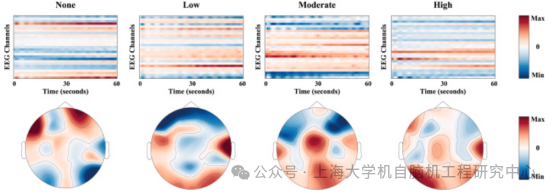
Figure 3. VR Cybersickness – EEG Correlation Analysis
Table 1. CELNet Model Cybersickness Assessment Performance

Conclusion:
To address the current lack of objective, detailed, and real-time assessment metrics for cybersickness in VR applications, this study utilizes EEG signals as evaluation criteria, achieving a quantitative assessment of VR cybersickness based on EEG signals. By inducing cybersickness symptoms in VR users through visual stimulation paradigms and collecting EEG signals; a mapping relationship between EEG and cybersickness is established using deep learning algorithms, allowing for scoring of the severity of cybersickness. This algorithm is expected to be embedded into VR headsets in the future, enabling true online real-time assessment of cybersickness.
